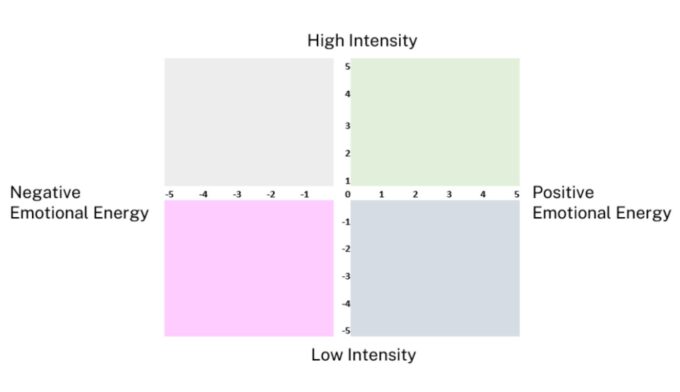Tapping into your emotions can make you more resilient and more efficient in your leadership.
Our ever-present emotions impact our thoughts and actions in sometimes surprising ways. Emotionally aware leaders who effectively embrace their feelings are more likely to serve as role models and inspire their teams.
Emotions have an adaptive function for us. Disregarding them means foregoing critical data that is relevant to make sense of a specific context or situation.
Leaders can build on the information they convey using this step-by-step approach, which I have simplified here and named “the four Ls of emotional resilience.”
1. Listen
Embrace what you are feeling in the present – in other words, practicing mindfulness. Acknowledge that you are experiencing emotions but don’t judge them. Suspending judgment is critical and requires self-empathy.
2. Label
Go deeper when it comes to exploring your emotional energy. Are these emotions positive or negative? How intense are they? Do you feel high energy or low energy? What is the exact feeling? Fear? Surprise? Anger? A combination? (It’s rare to feel just one emotion at a time.) Describing your emotions will help you understand where they come from and how to best work with them.
Ask yourself how you feel right now:
 On a scale of -5 to +5, rank how positive or negative you feel and how intense you experience this emotion.
On a scale of -5 to +5, rank how positive or negative you feel and how intense you experience this emotion.Reflect on the impact your feelings have. Why are you feeling this way? How does this impact others? How can you effectively work with this emotion? Do you need to process it, or can you benefit from this energy?
As a leader, how can you use what you have learned to suit your big-picture purpose, mission, or goals?
Consider the case of a VP for a global medical device company who came to us amid the COVID crisis. We’ll call this person Kim. (We disguised all identifiable details of this executive, so don’t bother trying to guess who it was.) Sales had dipped 32% annually and the forecast looked grim, so Kim was tasked with reducing headcount by an estimated 18% to keep the company viable. Kim reported feeling worried and anxious, but not on account of their own situation, as they were quite senior in the company and nearing retirement. By taking stock – listening to and labeling their emotions – Kim realized they felt fear on behalf of their team. So how could they leverage that knowledge?
What Kim did next was to create a space for their team to be honest about their fears and for management to address what they might be able to do to help. This space allowed them to explore even what was outside of management’s control. By doing this, Kim moved closer to team members than would have been possible with bottled-up feelings. This helped by building trust, increasing their emotional resilience.
Further reading:
Watch a video and read more here: Second that emotion – building emotional resilience
Author: Silke Mischke
IECC Co-Program Director and Senior Executive Coach
She works as a leadership lecturer and senior executive coach. She holds a doctorate in business administration and a master’s degree in Cognitive Psychology. Silke is licensed to administer and interpret several instruments to illuminate individual and group preferences and growth potential. Her coaching and teaching activities cover work with teams and individuals from international organizations.
Source: https://www.imd.org/ibyimd/brain-circuits/the-four-ls-of-emotional-resilience/

 English
English